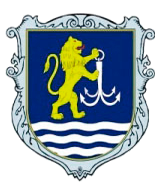DETERMINATION OF FUNCTIONAL CHARACTERISTICS OF CUSTOMS AND LOGISTICS INFRASTRUCTURE IN TRANSPORT SYSTEMS OF INTERNATIONAL DIRECTION
Abstract
Introduction. Critical analysis of literature sources shows the trends of stable development of integration processes in international production structures. Increasing the production of industrial goods and food requires the creation of new and intensive use of existing infrastructure of production units. Therefore, the development of competitive customs and logistics systems for servicing foreign trade flows is one of the main tasks of the relevant government and commercial structures. Purpose. The peculiarity of the growing volumes of export and transit transportation of goods is the need to involve in the organization of foreign trade supplies of powerful transport hubs with appropriate infrastructure. Taking into account the specifics of the development of economic integration processes, sea trade ports correspond to such opportunities. And intensive use of the existing and creation of the newest infrastructure of subjects of economic activity demands development of technological and structural bases for improvement of transportations of foreign trade cargoes. The article investigates the methodology of forming the infrastructure of customs and logistics systems of export orientation, taking into account the assessment of the competitiveness of transport services. Results. Development and practical use of methods of formation of production infrastructure in transport hubs are based on the principles of economic integration and improvement of transportation processes. It was found that compliance with the terms of accumulation and processing of import and export cargo is an important characteristic for transport hubs. And with the complication of the tasks of transport and customs and logistics services there is a need to form a rational infrastructure of transport systems. The proposed methodology for the formation of the infrastructure of transport hubs provides an opportunity to identify ways to intensive use of existing and the creation of promising production facilities of customs and logistics systems provided the optimal distribution of material resources. Conclusions. In the course of the research new results were obtained to improve the methodology of formation of customs and logistics infrastructure in transport hubs. Based on the main provisions of the theory of systems analysis, new and supplemented the existing results of the interaction of individual structural elements of production formations of international orientation. Using the method of simulation modeling, integrated indicators of quality transport service are calculated on the example of export cargo flows. The study can be useful for improving the efficiency of transport services for freight flows in international production structures.
Downloads
References
2. Apfelst A., Dashkovskiy S., Nieberding B. Modeling, optimization and solving strategies for matching problems in cooperative full truckload networks. IFAC Papers OnLine. 2016. Vol. 49. Issue 2. Pp. 18–26. URL: https://doi.org/10.1016/j.ifacol.2016.03.004
3. Danchuk V., Bakulich O., Svatko V. Identifying optimal location and necessary quantity of warehouses in logistic system using a radiation therapy method, Transport. 2019. Vol. 34. No. 2. Рp. 175–186.
4. Taji T., Tanigawa S.-I., Kamiyama N., Katoh N., Takizawa A. Finding an optimal location of line facility using evolutionary algorithm and integer program. Journal of Computational Science and Technology. 2008. No. 2 (3). Рp. 362–370.
5. Prokudin G., Remekh K., Maidanyk K. The efficiency of the runsystem application in international freight transportation. Politechnika Rzeszowska. 2017. No. 10. Рp. 79–86.
6. Dai B., Chen H. A multi-agent and auction-based framework and approach for carrier collaboration. Logistics Research. 2011. No. 3 (2–3). С. 101–120.
7. Shin S., Roh H.-S., Hur S. Characteristics Analysis of Freight Mode Choice Model According to the Introduction of a New Freight Transport System. Sustainability. 2019. Vol. 11 (4). 1209 р.
8. Lebid I., Luzhanska N., Kotsiuk O. Technical Support for Freight Customs Complex Operation. Вісник Східноукраїнського національного університету імені Володимира Даля : науковий журнал. 2019. Вип. 2 (250). С. 7–11.
9. Sonmez A. D., Lim G. J. A decomposition approach for facility location and relocation problem with uncertain number of future facilities. European Journal of Operational Research. 2012. Vol. 218. No. 2. Рp. 327–338.
10. Vorkut T., Volynets L., Bilonog O., Sopotsko O., Levchenko I. The model to optimize deliveries of perishable food products in supply chains. Eastern-European Journal of Enterprise Technologies. 2019. No. 5. Рp. 43–50.
11. Crainic T., Perboli G., Rosano M. Simulation of intermodal freight transportation systems: a taxonomy. European Journal of Operational Research. 2018. Vol. 270. No. 2. Рp. 401–418.
12. Ritzinger U., Puchinger J., Hartl R. A survey on dynamic and stochastic vehicle routing problems. International Journal of Production Research. 2015. Vol. 54. No. 1. Рp. 215–231.





